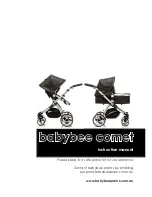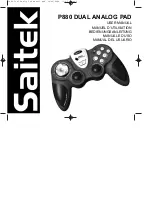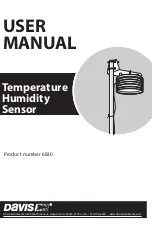
Danaher Motion
06/2005
Appendix B
M-SS-005-03 Rev
E
173
Once all axes are set up, groups contain these axes. You must have the
same user units
on all axes. Set the group scaling factors.
There is no position factor for the group!
Instead,
PFAC
for each axis is used.
MOVE g1 {1,2,3} vcruise = 10
Target coordinates are given to each axis and translated into encoder/resolver counts using
PFAC
for each axis.
VCRUISE
is not related to any axis. Group factors,
VFAC
,
AFAC
, and
JFAC
are used. The group velocity is expressed in position user units per seconds.
To have system units properly working, set the unit factors (
PFAC
,
VFAC
,
AFAC
and
JFAC)
of each axis to millimeters-degrees-seconds and set group units to seconds:
<
group
>.vfac = 1/1000
<
group
>.afac = vfac/1000
<
group
>.jfac = afac/1000
C
OUPLING
In many robotics applications, mechanical construction introduced mechanical coupling
between the axes. In such cases, two or more motors move only one joint. So activating only
one motor causes motion in two axes (joints). There are many examples of such mechanical
setups. Usually when the motors are dislocated for the joints, they are actuating. When the
motor-actuating second joint is placed before the first joint, the second joint is moved by the
motions of the first and second motors. Typical examples of such applications are displaced
motors of a robotic arm (PUMA) moving the robot arm via chains or belts. Differential gearing
on the last robot segment displaces the last motor (roll) from the end effector and both the
fifth and sixth motors introduce motions on the sixth and with joint (Staubli RX series).
Staubli RX – pair axes a5 ,a6:
j6.pcmd = a6.pcmd – a5.pcmd
BOSCH – SCARA – pair axes a3,a4:
j3.pcmd = a3.pcmd + 18.3*a4.pcmd.
PUMA – a2,a3 and a4:
j4.pcmd=a2.pcmd+a3.pcmd+a4.pcmd.
Scaling and Rotation:
j1 = 707.1*a1.pcmd + 707.1*a2.pcmd
j2 = 707.1*a1.pcmd + 707.1*a2.pcmd
Orthogonal Correction:
j1 =10000*a1.pcmd
j2 = 2.91*a1.pcmd + 10000*a2.pcmd
Group joints are standard in the MC's firmware, covering coupling examples given above.
M
OTION
E
LEMENTS
The MC is a multi-axis and multi-group system. In many aspects, groups and axes are the
same. For example, both have properties like:
AMAX
,
VMAX
,
VCRUISE
. Another common
aspect is the movement in both of them.
MOVE
moves both axes and groups. Although,
there are motion commands that are group-only (
CIRCLE
,
MOVES
) or axis-only (
JOG
),
when moving an axis separately, it is not possible to move the group containing the same
axis and vice versa. The axis is active in a group.
ATTACH
and
DETACH
work the same
way. You cannot attach an axis when its group is already attached. So, we can denote both
axes and groups using one term, motion-element.
















































